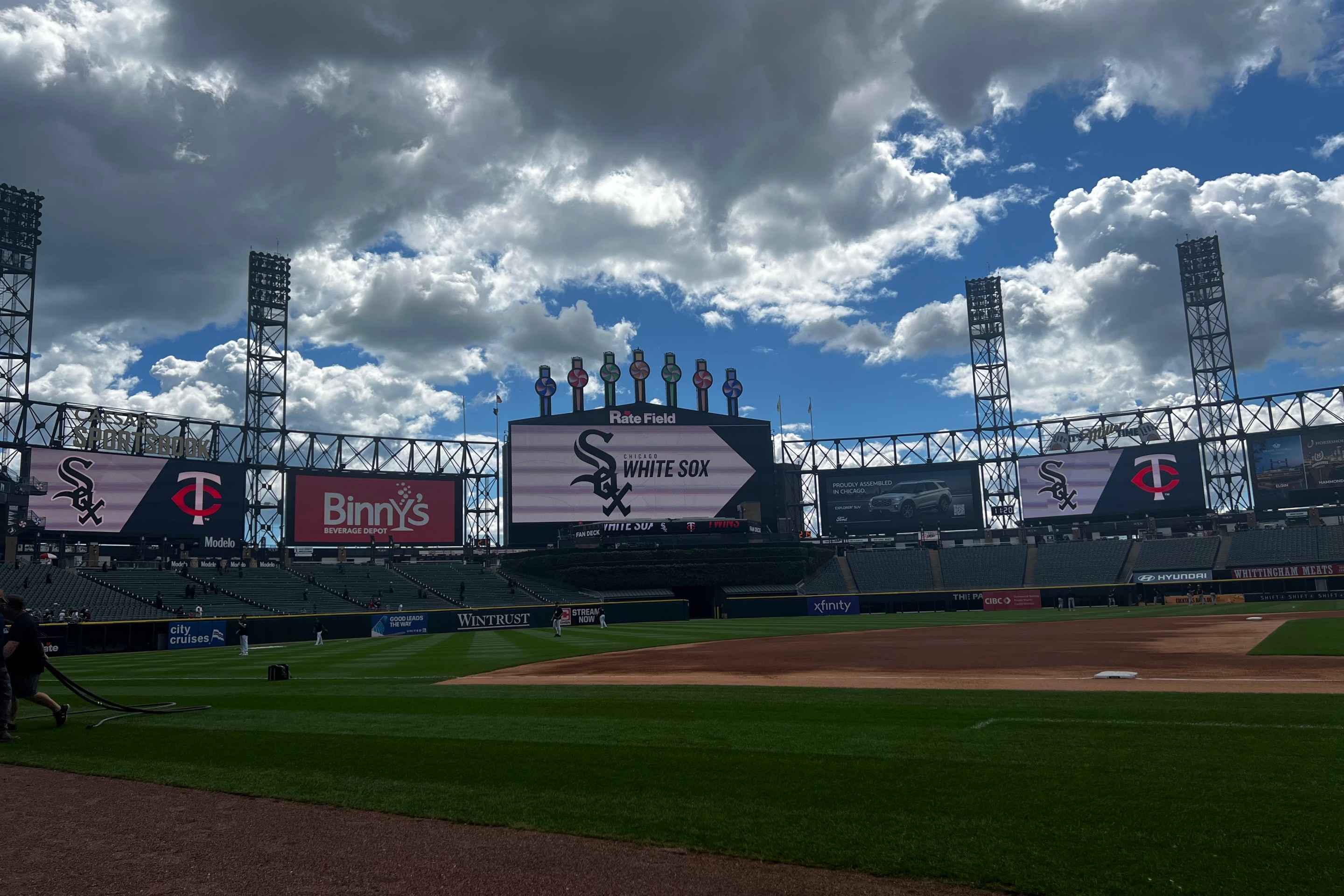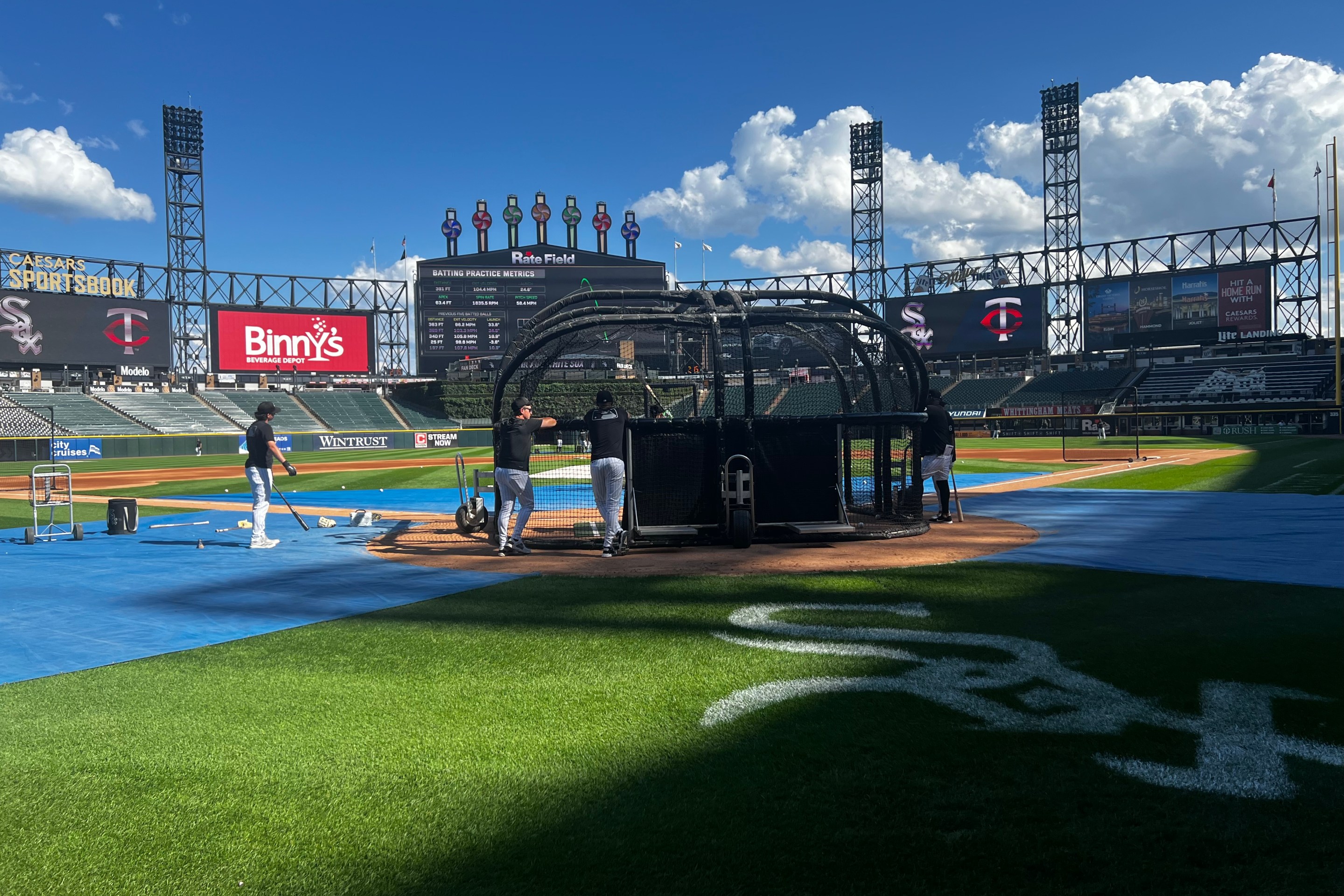Up until this month, it seemed like the value of the White Sox return from the Gregory Santos trade was just going to be second-round pick Blake Larson. And for a franchise with no present and just a distant future to dream on, trades of major leaguers for seven-figure high school prospects would be far from the worst thing, especially as Santos' injury-riddled 2024 shows his trade value would have dissipated early into spring.
But how Larson fares in instructional league is not going to encourage a fan base watching the worst season ever on television by night, and reading national features about how the franchise is intractably misled by day. Zach DeLoach has been doing competent fourth outfielder things when granted the opportunity of recent, but at long last, Prelander Berroa is ending the season looking closer to an asset to future bullpens, after spending most of the year throwing everyone off the trail.
Just as the White Sox are getting the most unwanted type of national attention in September, Berroa has been showing off all month. After two scoreless innings preserving a one-run lead Wednesday in Anaheim (a lead lost once he left the game), the 24-year-old right-hander has stuck out 20 of the 47 hitters he's faced (42.6 percent) in nine outings since being recalled at the end of August, and allowed just one run.
"He was throwing mop-up innings in Triple-A, and he's throwing leverage innings for us," said pitching coach Ethan Katz. "He's a happy-go-lucky guy. Right now he understands how close everything is to coming together."
After dealing with shoulder discomfort in spring, Berroa's velocity has bloomed over the course of the season and he's tilting toward 98 mph on his average fastball this month, and touched 100 mph on Wednesday. But the velocity is just supposed to occupy opposing hitters' minds, as his success comes while throwing his slider nearly 60 percent of the time. Scouts felt the slider lacked snap early in the season, and in line with that, Berroa identifies locating the pitch consistently below the belt as his big area of in-season improvement.
"I made a little adjustment to reduce my body movement and stay on a tunnel to home plate," Berroa said via interpreter. "Ever since I came here, the main point has been to locate that pitch lower in the zone. With that adjustment, I've been able to be more consistent with that."
As Brian Bannister reminds, teams don't want to tamp down a delivery so much that a pitcher loses the stuff that makes them special, but in watching him on video it's clear Berroa has removed no more violence from his delivery than he had to.
"It's an all-or-nothing delivery right now," Katz said with a smile. "But his confidence is really high. He just has to make sure he's not getting too out of whack, where he's falling off and losing his momentum down to the plate. But he's in a really good spot."
It's not hard to imagine Berroa falling off to the first base side too hard at times looking at his current delivery, or looking at his season game log where this current stretch is pretty much the only point in the year where he hasn't been beset by either walks or hard contact. It's hard to imagine a tougher debut to a new organization than an achy spring followed by 4½ months of largely getting hammered in Triple-A, but Berroa doesn't betray any lost confidence.
"It definitely has been a difficult process because when you're traded to a team, you want to be in the majors right away," Berroa said via interpreter. "But then I understood that it's a process and I did what I had to do to work on some stuff in the minors, and now I'm here and I'm trying to take advantage of that opportunity and still keep working to improve."
A league-leading 34 blown saves is a big reason why the White Sox are going to be saddled with the stain of the worst season ever rather than a nondescript rebuilding year, at a time in baseball history where 100-loss seasons are shrugged off as a means to an end. But for future-focused purposes, Berroa finishing the season looking like a shoo-in for the 2025 bullpen is an objective completed. That he spent most of the year racking up a 6.41 ERA in Charlotte is just par for the course, but also a reminder of how tenuous the hold on effectiveness can be for him and similarly profiled relievers.
Fraser Ellard has been sitting 95 mph from the left side with his fastball since coming to the majors, striking out 30 percent of hitters and generating grounders at a clip comfortably over 50 percent. In a world before the three-batter minimum, the 26-year-old rookie would be all set to ride his slider to a 10-year career as a lefty specialist.
But in this actual world that we've all been dealt, Ellard's early success is rooted in that Shea Langeliers' ultimately meaningless solo shot off him on Sunday made right-handed hitters just 2-for-33 against him since he debuted. BABIP looniness (lefties are .389 against him, righties are .048) notwithstanding, Ellard's long-term viability against right-handers has been boosted by his aptitude for adding pitches to expand himself beyond the typical four-seam/slider template.
Ellard was pitching in the Arizona Fall League last year when Sox pitching coordinator Matt Zaleski approached him with the somber news that his sinker wasn't very good and he should probably stop throwing it. A cutter was eventually prescribed as the better option for a third pitch, and Ellard finds that when he grabs an early strike with it, righties are less prepared to stay with his four-seamer or slider when they see either as a two-strike putaway pitch. When diving after the slider, or rising up to barrel a heater, there's an extra note of hesitance after seeing a cutter that didn't do either earlier in the at-bat.
As Juan Soto rose up to swat an otherwise idyllic up-and-in 96 mph fastball on the black into the right field seats off Ellard last month, the thought of finding a usable version of his sinker crept back in. Just like with his cutter to right-handers, Ellard just wanted a bridge pitch to muddy the waters for hitters trying to commit to either his fastball or slider. As is often the case in modern pitching, harnessing a personal quirk proved to be the key.
"I used to be a really, really heavy pronator, so it used to be really runny four-seams," Ellard said, explaining how the orientation of his wrist would make his fastball move to his arm side. "The more I tried to cut the four-seam, the better ride I would get. I started doing that as much as I could, to see how much could I feel like I can cut the four-seam to get ride. It's developed over the past year where now I'm naturally cutting it on my own. It's not a cut four-seam, it's still a true [four-seamer]. So I'm just taking that cue and pushing it a little bit further for the sinker, and it's actually been playing a little bit better."
Three years after signing for $20,000, Ellard has a 2.75 ERA in 19⅔ innings. Similar to Berroa, he seems like an easy projection for a wide open 2025 White Sox bullpen. A functional offense would be nice, so any money Ellard or Trey McGough's success in Triple-A can deter the Sox from throwing at veteran lefty relievers can't hurt.





